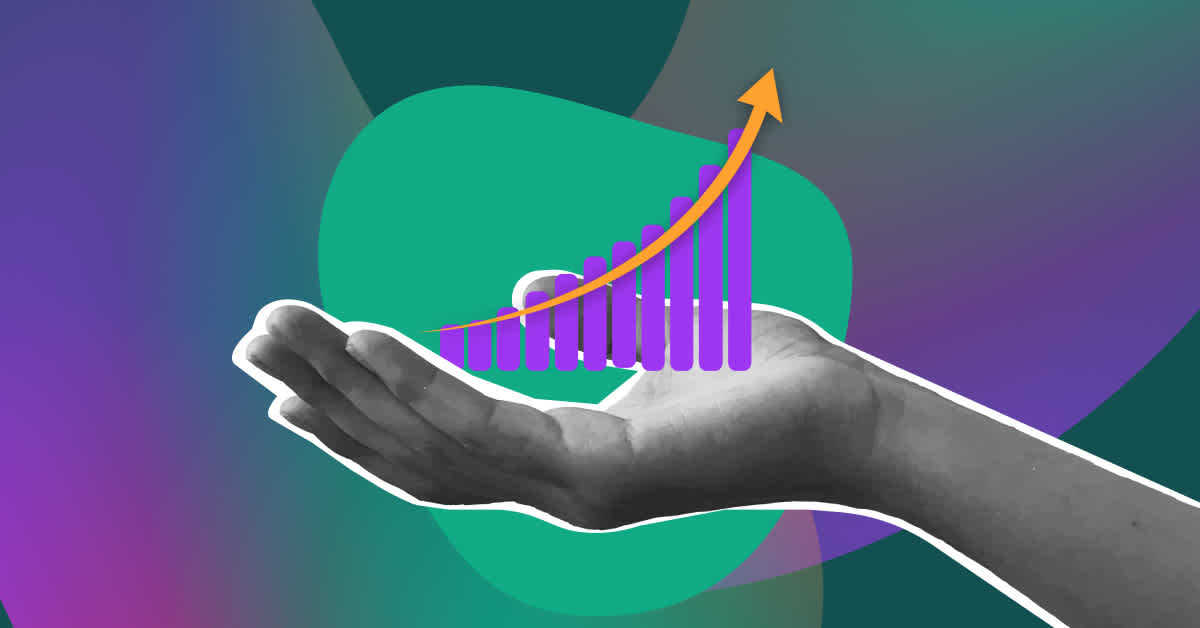Before taking a look at how Fullstory can help your business prepare for and win the holidays, we’ve compiled a list of the top stats retail and ecommerce brands should know from across the web.
Digital sales are growing
Ecommerce holiday sales in 2024 are projected to grow by up to 12.8% year-over-year, potentially reaching $284 billion.AI will be used A LOT
AI is expected to significantly enhance the holiday shopping experience by optimizing supply chain management and improving personalized recommendations. In 2024, AI in ecommerce is projected to boost sales by up to 15%.Buy Now, Pay Later (BNPL) is increasingly popular
The use of BNPL options is anticipated to hit record highs, contributing significantly to holiday spending. In 2023, BNPL drove $16.6 billion in online spend during the holiday season, a 14% increase year-over-year.Discounts will dominate
Discounts and special offers are expected to play a major role in driving holiday sales. In 2023, categories like electronics saw discounts as high as 31%, boosting consumer spending during key shopping days.Omnichannel shopping is the new norm
Consumers are increasingly using a mix of online and offline shopping methods. In 2023, 18.4% of online orders utilized curbside pickup.More shoppers are going digital
In 2023, approximately 2.33 billion people worldwide shopped online, with projections to reach 2.54 billion by 2025.North American shoppers dominate the global market
In 2023, 235 million U.S. consumers shopped online, representing 70.2% of the total population. This number is expected to rise to 239 million by 2025.Digital sales are increasing as buying trends change
Global ecommerce sales are projected to surpass $7 trillion in 2024, driven by mobile shopping, social media growth, and subscription services.Lost revenue is an ever-present pain
The average cart abandonment rate is 72.09% across all industries.Mobile shopping is rising
In the U.S., mobile commerce is expected to reach $534.18 billion in 2024, accounting for around 40% of total ecommerce sales.
Prepare for a successful holiday season
The holiday season is just around the corner, and for retail and ecommerce businesses, this means it's time to gear up for the busiest time of the year. To ensure everything runs smoothly, leveraging advanced tools to understand customer behavior, optimize your site or app, personalize interactions, resolve issues quickly, and boost conversions is essential. Fullstory offers a complete suite of analytics and insights to help you do just that.
Make effective decisions with behavioral data
Understanding your customers is vital to a successful holiday season. Fullstory's ability to surface behavioral insights captured in real time gives you a clear look into how customers interact with your site. This data helps you pinpoint popular products, understand user preferences, and spot friction points. For example, you can analyze which product pages get the most visits, where users drop off, and what actions lead to successful conversions.
Fullstory's Session Summaries, powered by AI, offer quick and actionable insights into user sessions. This feature, designed for efficiency, highlights fundamental interactions and pain points, enabling you to make informed decisions swiftly to enhance user experience.
In addition, Data Direct allows you to integrate Fullstory data with your data warehouse, facilitating deeper analysis and custom reporting. This direct access to data empowers your team to build detailed reports and gain comprehensive insights into user behavior.
With this comprehensive information, you can make data-driven decisions to optimize your product offerings and layout, ensuring you meet customer demands efficiently during the high-traffic holiday period. With global ecommerce sales projected to surpass $7 trillion in 2024, staying competitive is more important than ever.
Optimize website and app performance
Your website needs to be at its best during the holiday rush. Fullstory’s Session Replay and Heatmaps are game changers here. Session Replay lets you watch real-time replays of user sessions, showing how customers interact with your site and helping you quickly identify and fix issues that could disrupt the shopping experience–like long load times and error messages. Heatmaps highlight areas that attract the most attention, helping you optimize your site layout. For instance, if heatmaps show that users frequently click on non-interactive elements, you can adjust the design to guide them more effectively towards actionable content, thus improving navigation and usability.
Boost engagement with personalized customer interactions
Personalization can significantly boost engagement and sales during the holidays. In fact, companies that excel at personalization outperform their peers in sales growth by 85%.
Fullstory's User Segments and Journey Mapping let you create and analyze specific customer segments. By understanding unique behaviors and preferences, you can tailor your marketing and online content to deliver a more personalized experience. For instance, you can segment customers based on browsing history, purchase behavior, or demographic information and create targeted campaigns that resonate with each group. This personalized approach can increase engagement rates, as customers feel more valued and understood.
Maintain a seamless online shopping experience
Quickly identifying and resolving issues is crucial for a smooth holiday shopping experience. The last thing teams want is to lose customers because an easily fixable bug went unnoticed. Fullstory’s real-time access to critical data enables teams to identify, diagnose, and solve problems as soon as they happen. By monitoring user sessions, teams can detect issues like slow load times, broken links, or checkout problems before they impact a large number of customers.
Fullstory also provides Metric Alerts, which notify your team when specific performance metrics deviate from expected thresholds. These alerts help teams quickly spot and address issues such as error rate spikes or conversion rate drops, ensuring a seamless shopping experience.
Teams are not only able to rectify problems as they arise but are empowered to proactively address these issues, improving the shopping experience and reducing the risk of abandoned carts and lost sales. This ensures that your site runs smoothly throughout the holiday rush.
Boost online conversions with data-based strategies
At the end of the day, the goal is to boost conversions. Fullstory’s Funnels and Conversions tracks and analyzes conversion funnels, helping you identify drop-off points and opportunities for improvement. By optimizing the checkout process and other critical touchpoints, businesses can enhance the user experience and increase successful transactions. For example, if many users abandon their carts at the payment stage, you can investigate and address issues like complicated forms, lack of payment options, or security concerns. Implementing these improvements leads to a smoother checkout process, higher customer satisfaction, and increased sales.
Fullstory’s Tabbed Browsing feature also lets you see when users compare competitors by monitoring their behavior across multiple tabs. This insight helps you understand when and why users consider alternatives, enabling you to make strategic adjustments to retain their attention and encourage conversions.
By leveraging these tools and insights, businesses can make data-driven decisions to enhance the user experience, minimize friction points, and boost conversions during the critical holiday season.
Stay secure and minimize risks
In addition to being prepared to wow an influx of shoppers during the holidays, businesses need to be ready to protect sensitive customer information and minimize risk.
Fullstory’s Privacy by Default approach automatically excludes sensitive information from session recordings, ensuring customer data remains protected and compliant with privacy regulations. This is especially critical during the high-traffic holiday season when data security is paramount.
Chargeback fraud is a significant issue for online retailers year-round, but especially during the holidays. Session Replay is invaluable for preventing this annoyance. By replicating customer sessions, businesses have concrete evidence to verify transactions and resolve disputes, offering clear proof of customer actions on your site and safeguarding your revenue.
Final thoughts
Preparing for the holiday season involves more than just stocking inventory. It requires a strategic approach to understanding and enhancing the customer experience. Fullstory offers a comprehensive suite of tools that provide deep insights into user behavior, optimize website and app performance, personalize customer interactions, resolve issues proactively, and boost conversions. Leveraging Fullstory’s powerful analytics and insights can help retail and ecommerce businesses ensure a seamless and successful holiday shopping experience for their customers.
Want to see these recommendations in action? Explore Fullstory's retail and ecommerce analytics to learn how brands like yours are transforming online experiences.



